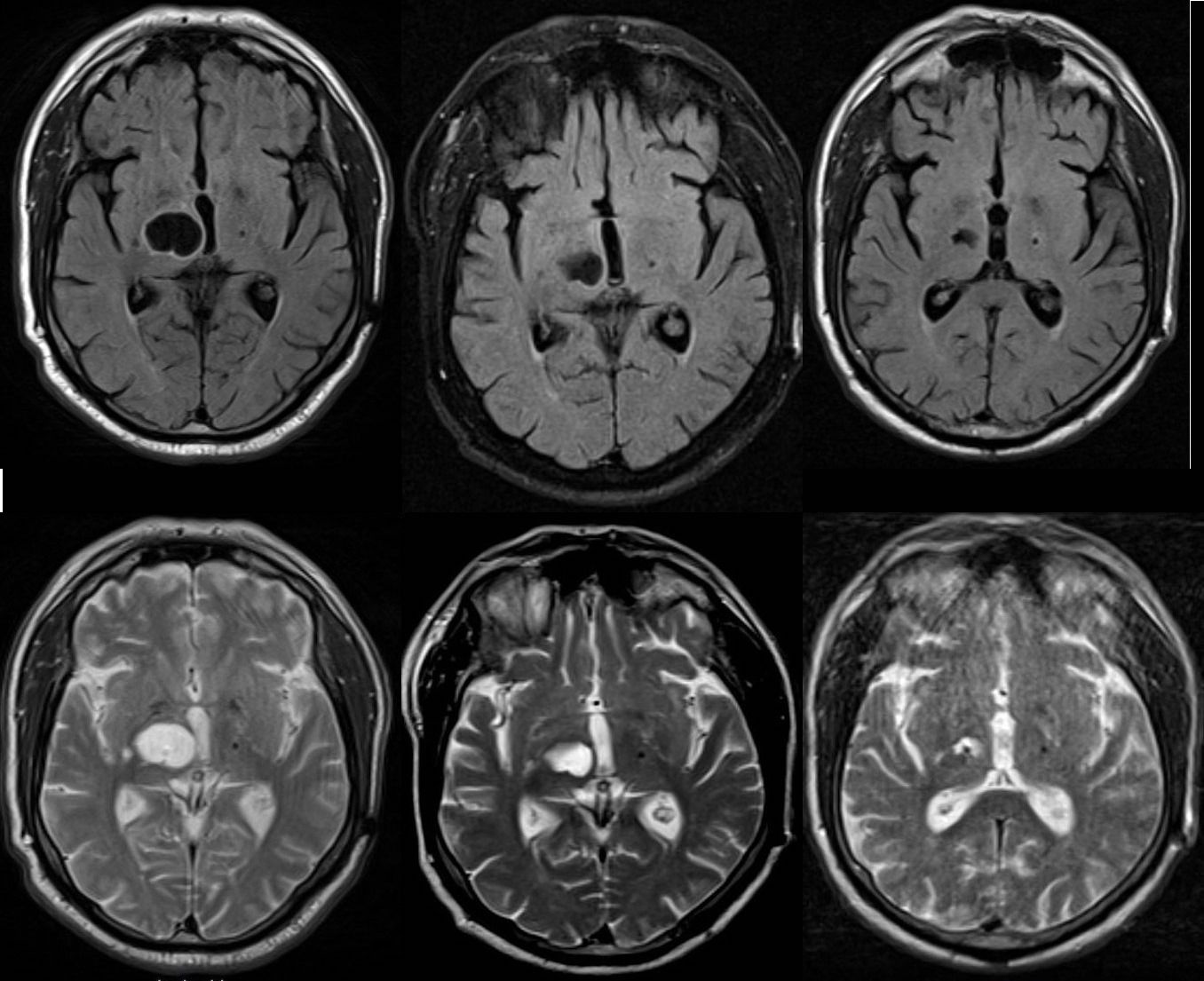Objective: To present a case that highlights the recognition of a rare complication following deep brain stimulation (DBS) surgery and its management.
Background: Deep brain stimulation (DBS) has evolved as an important and established treatment for movement disorders and new indications for DBS in the treatment of neurological and psychiatric disorders are emerging.[1] Although it is a generally safe and well tolerated procedure, acute and delayed complications may be encountered. These include infection, intraparenchymal hemorrhage, seizure, cerebrospinal fluid (CSF) leak, lead break and lead displacement in the acute phase; and implantable pulse generator (IPG) infection, lead migration, granuloma and cyst formation in the delayed phase. [2] An unusually rare complication is the formation of a cyst along the DBS electrode that has been recently described in the literature. Ours is the second reported case of ET were a conservative approach was adopted in a symptomatic case with marked improvement in symptoms and spontaneous regression in the size of the cyst over several months.[3]
Method: We report a patient with essential tremor (ET) who developed a rare complication following DBS surgery in the form of a case report.
Results: We present a 78 year-old male patient with a history of advanced essential tremor (ET) who underwent bilateral DBS of the ventral intermediate nucleus of the thalamus. 5 months after initial significant clinical improvement following surgery, the patient developed left sided weakness and gait instability contributing to falls. Imaging revealed the presence of a unilateral CSF cyst around the right DBS electrode lead. 6 months of follow up led to radiological regression of the cyst and symptomatic improvement.
Conclusion: This case in the context of the limited literature currently available illustrates that after ruling out infection and other potential causes, these intraparenchymal CSF cysts that develop around the DBS lead may be self-limiting entities that can be successfully observed and followed over time for evidence of regression with surveillance imaging even in symptomatic individuals. This case suggests that a conservative approach may be pursued as opposed to more aggressive surgical management in similar cases and needs to be tailored on a case by case basis.
References: 1.Deep Brain Stimulation Management. William Marks Jr. Cambridge University Press 2011 2.Gustavo Fernandez-Pajarin, A. Sesar, B. Ares, et al. Delayed complications of deep brain stimulation: 16-year experience in 249 patients. Acta Neurochir 2017; 159:1713-1719 3.Michael D. Staudt, Keith W. MacDougall. Spontaneous Regression of an Intraparenchymal Cyst Following Deep Brain Stimulator Electrode Implantation: Case Report and Literature Review. World Neurosurg 2018; 117: 249-254
To cite this abstract in AMA style:
A. Boddu, J. Siddiqui. Intraparenchymal Cyst Formation and Spontaneous Regression following Deep Brain Stimulation Surgery [abstract]. Mov Disord. 2020; 35 (suppl 1). https://www.mdsabstracts.org/abstract/intraparenchymal-cyst-formation-and-spontaneous-regression-following-deep-brain-stimulation-surgery/. Accessed January 2, 2026.« Back to MDS Virtual Congress 2020
MDS Abstracts - https://www.mdsabstracts.org/abstract/intraparenchymal-cyst-formation-and-spontaneous-regression-following-deep-brain-stimulation-surgery/

